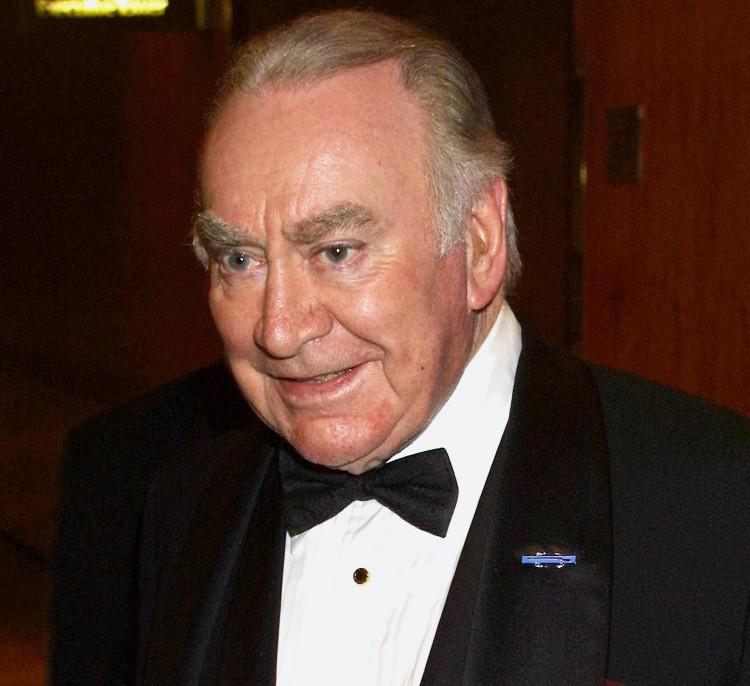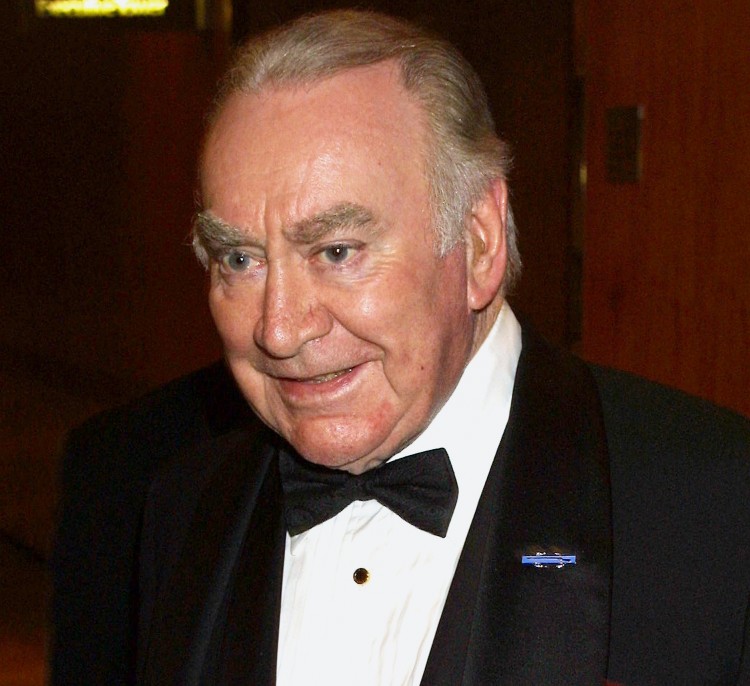NEW YORK—A funeral mass was held at St. Patrick’s Cathedral on Thursday morning for former Gov. Hugh Carey, who is best known for guiding New York City through a potentially devastating financial crisis in the 1970s by assiduously making hard but effective decisions throughout his two-term, eight-year tenure.
“As governor, he faced a state and a city that were, in the words of his friend Mayor Koch, ‘headed toward the pit of bankruptcy,’” said Cardinal Edward M. Egan, the retired archbishop of New York who presided at the funeral mass.
Prominent attendees at the funeral included Gov. Andrew Cuomo, his father and Carey’s gubernatorial successor Mario Cuomo, former Gov. George E. Pataki, Mayor Michael Bloomberg, former Mayors Rudolph Giuliani, David Dinkins, and Edward Koch, Sen. Charles E. Schumer, and Rep. Peter T. King.
“Hugh Carey was probably one of the greatest governors in our history,” said state Sen. Malcolm Smith on Sunday, the day Carey passed away at age 92. “During times [like] we are in right now—during financially challenging times as Washington just went through—it was Hugh Carey who brought New York state through.”
In 1975, New York City faced a financial crisis due to over $10 billion in outstanding loans and nearly defaulted. Creditors refused to underwrite the city in April of that year.
“The city used obsolete and confusing budgeting and accounting systems that included such financial gimmicks as overly optimistic forecasts of revenues, … underfunding of pensions, … [and] writing checks late,” states “An Overview of New York City’s Fiscal Crisis” by the California Research Bureau of the California State Library.
Carey became governor during this crisis. He instituted steps like creating the Municipal Assistance Corporation, an independent entity that was allowed to sell bonds to meet the city’s urgent need to borrow, and lobbied for President Gerald Ford to provide billions of dollars in seasonal Treasury loans after first being refused.
These steps, along with assistance from the state, averted a city bankruptcy that had leaders the world over worried about the possible impact of a default on the international economy.
The city then met the federal timetable for balancing the budget and was able to continue to receive financing with federal backing.
Carey also improved the environment around the city, including cleaning up the Love Canal—a former contaminated waste disposal site on the top of which an elementary school and around 100 homes had been built in the late 1950s—and relocating some families that lived there.
Carey was one of four Irish-American politicians who strongly opposed the violence in Northern Ireland beginning in 1977. He also opposed the Vietnam War.
Before becoming governor, he served 14 years in the U.S House of Representatives. He was a pivotal backer of the U.S Education Act of 1965.
“This was perhaps his most important and enduring congressional success, as it marked the first time the federal government provided significant funding for schools, both public and parochial,” states the introduction of the book about Carey titled “The Man Who Saved New York.”
Carey was born in Brooklyn and had 14 children. He served in the New York National Guard and took part in liberating the Nordhausen concentration camp during World War II.
His legacy includes the Jacob K. Javits Convention Center, the Battery Park City, and the South Street Seaport, all of which were constructed during his time as governor. His move to shut down the Willowbrook Development Center in Staten Island was part of the effort to rectify inhumane treatment of the disabled.
Carey will be buried on Shelter Island, where three generations of his family currently rest. He was on the island when he died and had a summer home there.
One of Carey’s most famous sayings, “The days of wine and roses are over,” is often recalled as a befitting summary of his actions as governor.
“He called for shared sacrifice and asked all New Yorkers to come together,” said Cuomo in a press statement. “New Yorkers across the state heard the governor’s call to action, followed his lead, and the ship was righted.”
“As governor, he faced a state and a city that were, in the words of his friend Mayor Koch, ‘headed toward the pit of bankruptcy,’” said Cardinal Edward M. Egan, the retired archbishop of New York who presided at the funeral mass.
Prominent attendees at the funeral included Gov. Andrew Cuomo, his father and Carey’s gubernatorial successor Mario Cuomo, former Gov. George E. Pataki, Mayor Michael Bloomberg, former Mayors Rudolph Giuliani, David Dinkins, and Edward Koch, Sen. Charles E. Schumer, and Rep. Peter T. King.
“Hugh Carey was probably one of the greatest governors in our history,” said state Sen. Malcolm Smith on Sunday, the day Carey passed away at age 92. “During times [like] we are in right now—during financially challenging times as Washington just went through—it was Hugh Carey who brought New York state through.”
In 1975, New York City faced a financial crisis due to over $10 billion in outstanding loans and nearly defaulted. Creditors refused to underwrite the city in April of that year.
“The city used obsolete and confusing budgeting and accounting systems that included such financial gimmicks as overly optimistic forecasts of revenues, … underfunding of pensions, … [and] writing checks late,” states “An Overview of New York City’s Fiscal Crisis” by the California Research Bureau of the California State Library.
Carey became governor during this crisis. He instituted steps like creating the Municipal Assistance Corporation, an independent entity that was allowed to sell bonds to meet the city’s urgent need to borrow, and lobbied for President Gerald Ford to provide billions of dollars in seasonal Treasury loans after first being refused.
These steps, along with assistance from the state, averted a city bankruptcy that had leaders the world over worried about the possible impact of a default on the international economy.
The city then met the federal timetable for balancing the budget and was able to continue to receive financing with federal backing.
Carey also improved the environment around the city, including cleaning up the Love Canal—a former contaminated waste disposal site on the top of which an elementary school and around 100 homes had been built in the late 1950s—and relocating some families that lived there.
Carey was one of four Irish-American politicians who strongly opposed the violence in Northern Ireland beginning in 1977. He also opposed the Vietnam War.
Before becoming governor, he served 14 years in the U.S House of Representatives. He was a pivotal backer of the U.S Education Act of 1965.
“This was perhaps his most important and enduring congressional success, as it marked the first time the federal government provided significant funding for schools, both public and parochial,” states the introduction of the book about Carey titled “The Man Who Saved New York.”
Carey was born in Brooklyn and had 14 children. He served in the New York National Guard and took part in liberating the Nordhausen concentration camp during World War II.
His legacy includes the Jacob K. Javits Convention Center, the Battery Park City, and the South Street Seaport, all of which were constructed during his time as governor. His move to shut down the Willowbrook Development Center in Staten Island was part of the effort to rectify inhumane treatment of the disabled.
Carey will be buried on Shelter Island, where three generations of his family currently rest. He was on the island when he died and had a summer home there.
One of Carey’s most famous sayings, “The days of wine and roses are over,” is often recalled as a befitting summary of his actions as governor.
“He called for shared sacrifice and asked all New Yorkers to come together,” said Cuomo in a press statement. “New Yorkers across the state heard the governor’s call to action, followed his lead, and the ship was righted.”







Friends Read Free